50+ IB Biology IA Ideas
check out our results
Request Free Trial Class
Are you an IB Biology student looking for the perfect Internal Assessment topic?
Tychr has curated a list of 50+ IB Biology IA ideas to inspire and guide you through your project. This list features 50+ specific IB Biology IA ideas covering a variety of biological concepts such as ecology, genetics, human physiology, microbiology, and biotechnology. Designed for both IB Biology SL IA and IB Biology HL IA students, these topics help you craft a standout project tailored to your level. To further support your efforts, the collection includes IB Biology IA samples to assist with structuring and presenting your investigation effectively.
Whether you’re conducting experiments or analyzing biological data, these IB Biology IA ideas are perfect for creating a unique and high-scoring IA. With Tychr’s expert support, you’ll have all the tools you need to confidently approach your IB Biology IA, whether you’re in SL or HL. Explore the list now to find the perfect topic that matches your interests and academic goals!
IB Biology SL IA Ideas
The IB Biology SL Internal Assessment (IA) is a project that requires students to complete an independent research project on a chosen theme. The IA is worth 20% of the final assessment and is an opportunity for students to showcase their understanding of the subject. Here are some carefully curated IB Biology SL IA topic ideas to help students get started. These ideas have been tried and tested and are popular with examiners. The list includes the basic reasons for investigating each topic, possible independent and dependent variables, and the experimental setup. It’s important to consider if the topics can be applied to one’s own life, as this shows personal engagement.
1.) How do different sodium chloride concentrations affect seed germination in the bougainvillaea plant?
Experimental setup:
Soak the bougainvillaea seeds in sodium chloride of varying concentrations for a specific time period. Place them in Petri dishes and count the number of seeds that germinate. Conduct at least 5 trials, excluding control.
Independent Variable:
Sodium chloride concentrations
Dependent Variable:
Seed germination percentage
2.) How does extract of the seeds and the leaves of the moringa plant (herbal medicine) show antifungal activity against the Malassezia yeast (Pittosporum) fungi?
Experimental setup:
Mix yeast and herbal medicine. Then use agar plates and fungus to test their effectiveness by seeing how many fungi grow in the different plates.
Independent Variable:
Seeds and the leaves of the moringa plant
Dependent Variable:
Antifungal activity
3.) How does the concentration of zinc chloride affect the growth of plaque?
Experimental setup:
Mix different concentrations of zinc chloride in different agar plates and bacteria, and check for plaque formation over time.
Independent Variable:
Concentration of zinc chloride
Dependent Variable:
Growth of plaque
4.) How effective are synthetic antibacterial products compared to natural antibacterial products against the growth of Cut bacterium acne?
Experimental setup:
Chose a synthetic and natural antibacterial product and mix them with a little water to create diluted solutions of them. Then use agar plates and bacteria to test their effectiveness by seeing how many bacteria grow in the different plates.
Independent Variable:
Types of antibacterial products (Natural vs synthetic)
Dependent Variable:
Growth of Cut bacterium acne
5.) How do the different teas, used to water Vignata radiata seeds, affect the germination rate?
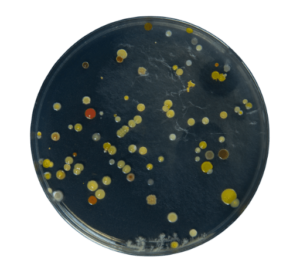
Experimental setup:
Place Viganata radiata seeds into various Petri dishes of the same number. Water them regularly using a diluted solution of different types of teas. Count the number of seeds that germinate over time and take note. Repeat the same procedure 5 times, including control.
Independent Variable:
The different types of teas (green tea, chamomile, etc)
Dependent Variable:
The rate of germination of Vignata radiata
6.) How do varying salinity levels affect the rate of germination in the grass species Spartina anglica and Eragrostis plana?
Experimental setup:
Use different concentrations of salinity levels in petri dishes with the two different grass species and compare the rate of gemination over a period of time. Repeat for five trials.
Independent Variable:
Salinity levels
Dependent Variable:
Germination rate
7.) What is the effect of potassium ion concentration (ppm) on the initial (day 0 to day 2) rate of growth of Hygrophilla difformis through mass change per day (g/day) over a period of 1 week?
Experimental setup:
Use various concentrations of potassium in the soil in which the Hygrophilla difformis has been planted to asses rate of growth over 1 week. Compare the different pots containing varied concentrations to conclude on the optimum level.
Independent Variable:
Potassium concentration
Dependent Variable:
Rate of growth
8.) Effect of different concentrations of fertilisers on growth of Solanum lycopersicum?
Experimental setup:
In various pots (atleast 5) containing Solanum lycopersicum, add varied levels of fertiliser concentration and assess rate of growth over a period of time.
Independent Variable:
Fertilizer concentration
Dependent Variable:
Rate of growth
9.) Effects of the addition of different concentrations of 11% humic acid and 5% fulvic acid on rate of growth and fruit development in Solanum lycopersicum L?
Experimental setup:
Take the required number of pots, and add humic and fluvic acid to Solanum Lycopersicum in soil of varying concentrations and asses the rate of growth over and fruit development over a fixed period of time. Compare the different pots containing varied concentrations to conclude on the optimum combination.
Independent Variable:
Mixture of humic and fulvic acid
Dependent Variable:
Rate of change of the height of the plant
10.) To what extent does light intensity affect the concentration of sucrose within a kiwi?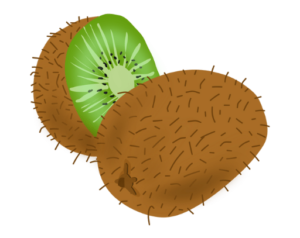
Experimental setup:
Exposing samples of kiwi concentrate to different light intensities for certain periods of time and measuring their sucrose concentrations before and after.
Independent Variable:
Light Intensity
Dependent Variable:
Sucrose Concentration
11.) Effect of Potassium concentration on the growth rate of Raphanus sativus (Radishes)?
Experimental setup:
Planting and growing radishes within the same type of soil of different potassium ion concentrations
Independent Variable:
Potassium Ion Concentration
Dependent Variable:
Length of shoot and root of Raphanus sativus
12.) Effect of temperature on the concentration of Vitamin C within various citrus fruits?
Experimental setup:
Extracting different citrus fruit concentrates such as grapefruits, oranges and lemons and heating these samples at different temperatures for a certain duration and measuring their Vitamin C concentration before and after.
Independent Variable:
- Temperature
- Citrus Fruits
Dependent Variable:
Vitamin C Concentration
13.) Investigating the effect of different light intensities and frequencies on the rate of photosynthesis in Spinacia Oleracea.
Experimental setup:
Exposing samples of Spinacia oleracea(spinach) leaves to different light intensities for certain periods of time and measuring the rate of photosynthesis.
Independent Variable:
- Light Intensity
- Frequency of Light
Dependent Variable:
Rate of Photosynthesis of Spinacia Oleracea
14.) Examining the relationship between temperature and the rate of cellular respiration in yeast.
Experimental setup:
Under different environmental temperatures within a certain time period, we measure the amount of carbon dioxide and water released by samples of yeast as a measure of their rate of cellular respiration.
Independent Variable:
Temperature
Dependent Variable:
Rate of Respiration (By measuring the amount of carbon dioxide and water released)
15.) To what extent does the frequency and wavelength of sound affect the growth of Triticum Aestivum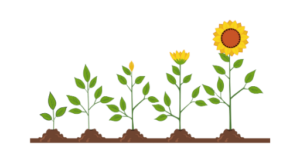
Experimental setup:
Observing the germination rate and rate of growth of Triticum Aestivum under sound treatment with different frequencies and wavelengths of sound.
Independent Variable:
- Frequency of sound
- Wavelength of sound
Dependent Variable:
- Germination rate of Triticum Aestivum
- Growth rate of Triticum Aestivum
16.) Investigating the effect of salt concentration on the germination rate of Raphanus Sativus.
Experimental setup:
Analysing and measuring the germination rate of Raphanus Sativus seeds(radish seeds) with provision of various concentrations of salt dissolved in water.
Independent Variable:
Concentrations of salt in water
Dependent Variable:
Rate of germination of Raphanus Sativus
17.) To what extent does light wavelength and light intensity affect the rate of curdling of cow milk.
Experimental setup:
Placing various samples of milk underneath different light intensities(low, medium, high) and wavelengths(normal, no light, red, blue, etc.) for a duration of 2 hours and observing the rate of curdling by measuring the change concentration of lactic acid. The milk is curdled by first heating the milk until it comes to a boil and then placing a fixed amount of curd into the samples.
Independent Variable:
- Light wavelength
- Light Intensity
Dependent Variable:
Change in concentration of Lactic acid in cow milk
18.) Examining the relationship between the concentration of carbon dioxide and the rate of photosynthesis in Elodea.
Experimental setup:
Measuring the effect of various concentrations of carbon dioxide on the photosynthesis of samples of Elodea for a certain duration of time.
Independent Variable:
Carbon dioxide concentration
Dependent Variable:
Rate of photosynthesis(Amount of oxygen and glucose produced)
19.) Investigating the effect of different pollutants on the oxygen content of various aquatic environment water
Experimental setup:
Placing various types of pollutants within samples of aquatic environmental water and measuring the change in quantity of dissolved oxygen within the sample.
Independent Variable:
Various types of pollutants and different aquatic environmental water samples
Dependent Variable:
Change in quantity of dissolved oxygen
20.) How does the concentration of sucrose affect the rate of osmosis in potato cells?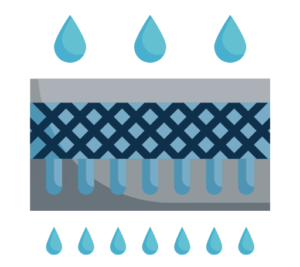
Experimental setup:
Cut identical pieces of potato and place them in solutions of different concentrations of sucrose. Measure the change in mass of the potato pieces over time.
Independent Variable:
Concentration of sucrose solution
Dependent Variable:
Change in mass of potato pieces
21.) What is the effect of caffeine on the heart rate of daphnia?
Experimental setup:
Observe the heart rate of daphnia under the influence of caffeine at different concentrations.
Independent Variable:
Concentration of caffeine
Dependent Variable:
Heart rate of daphnia
22.) What is the effect of different types of music on the growth rate of pea plants?
Experimental setup:
Play different genres of music to pea plants and measure the rate of growth.
Independent Variable:
Genre of music
Dependent Variable:
Rate of growth of pea plants
23.) How does the concentration of salt affect the activity of the amylase enzyme in saliva?
Experimental setup:
Add amylase enzyme to saliva at different concentrations of salt and measure the rate of starch breakdown.
Independent Variable:
Concentration of salt in saliva
Dependent Variable:
Rate of starch breakdown
24.) How does the temperature affect the rate of respiration in yeast cells?
Experimental setup:
Measure the rate of carbon dioxide production by yeast cells at different temperatures.
Independent Variable:
Temperature
Dependent Variable:
Rate of carbon dioxide production
25.) Investigating the effect of temperature and carbon dioxide on the rate of enzyme activity and fermentation in Saccharomyces cerevisiae
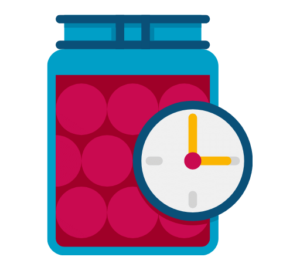
Experimental setup:
Exposing samples of Saccharomyces cerevisiae (yeast) to different temperatures and carbon dioxide concentrations and measuring the rate of enzyme activity and fermentation.
Independent Variable:
- Temperature
- Carbon Dioxide
Dependent Variable:
- Rate of Enzyme Activity of Saccharomyces cerevisiae
- Rate of Fermentation
26.) Investigating the effect of different concentrations of salt on the germination and growth rate of Phaseolus vulgaris
Experimental setup:
Germinating samples of Phaseolus vulgaris (common bean) in solutions of different concentrations of salt and magnesium and measuring the germination and growth rate.
Independent Variable:
- Concentration of Salt
- Concentration of Magnesium
Dependent Variable:
- Germination Rate of Phaseolus vulgaris
- Growth Rate of Phaseolus vulgaris
27.) Investigating the effect of pH and light intensity on the activity of catalase and its rate of denaturation extracted from Prunus avium
Experimental setup:
Extracting and exposing samples of Prunus avium(cherries) to solutions of different pH values and light intensities and measuring the activity of catalase and its rate of denaturation.
Independent Variable:
- pH of solution
- Light intensity
Dependent Variable:
- Activity of Catalase from Prunus avium
- Rate of denaturation
28.) Investigating the effect of temperature and carbon dioxide concentration on the rate of photosynthesis in Elodea canadensis
Experimental setup:
Exposing samples of Elodea canadensis (Canadian waterweed) to different temperatures and measuring the rate of photosynthesis using a dissolved oxygen probe.
Independent Variable:
- Temperature of the water in which Elodea canadensis is placed.
- Carbon dioxide concentration
Dependent Variable:
Rate of photosynthesis in Elodea canadensis measured by the amount of oxygen produced.
29.) Investigating the effect of different environmental conditions on the ripening of Citrus × sinensis, Citrus × aurantiifolia and Citrus × paradisi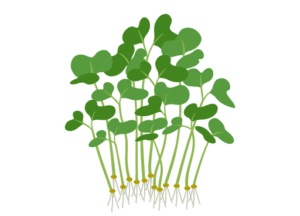
Experimental setup:
Create a study that monitors the levels of ethylene or CO2 in fruits over a period of time, while subjecting different fruits to varying independent variables.
Independent Variable:
- Temperature
- Light Intensity
Dependent Variable:
- Concentration of Ethylene
- Concentration of CO2
30.) Investigating the effect of nitrate and magnesium concentration in soil on the germination and folate content of Solanum lycopersicum.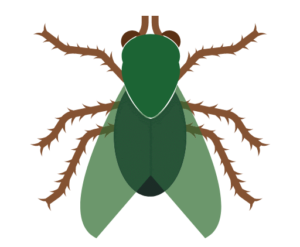
Experimental setup:
Growing samples of Solanum lycopersicum (tomato) in different types of soil and measuring the growth and folate content of samples.
Independent Variable:
- Nitrate concentration of soil
- Magnesium concentration of soil
Dependent Variable:
- Growth of Solanum lycopersicum.
- Folate content of Solanum lycopersicum
Download our Successful College Application Guide
Our Guide is written by counselors from Cambridge University for colleges like MIT and other Ivy League colleges.
To join our college counseling program, call at +918825012255

IB Biology HL IA Ideas
The IB Biology HL Internal Assessment (IA) is a 20% project that requires students to complete an independent research project on a chosen theme. Here are some carefully curated IB Biology HL IA topic ideas to help students get started. These ideas have been tried and tested and are popular with examiners. The list includes the basic reasons for investigating each topic, possible independent and dependent variables, and the experimental setup. It’s important to consider if the topics can be applied to one’s own life, as this shows personal engagement.
1.) How do temperature and light intensity that affects photosynthesis balance out each other when it comes to the time taken for photosynthesis to occur?
Experimental setup:
Expose selected plants with different levels of temperature and light intensity to find the optimum combination for maximum growth rate. Conduct at least 5 trials, excluding control.
Independent Variable:
Temperature and light intensity
Dependent Variable:
Time taken for photosynthesis
2.) To what extent does scarification have an effect on germination percentage and shoot growth?
Experimental setup:
Select a seed that requires scarification and treat it with different methods of scarification like heat, acid and freeze-thaw. Conduct at least 5 trials, excluding control. Compare results to conclude which scarification is most effective.
Independent Variable:
Types of scarification
Dependent Variable:
Germination percentage and shoot growth
3.) How do cumin and turmeric powder, in comparison to indigestion tablets, affect the rate of neutralization of hydrochloric acid, measured by the difference of change in pH levels in 5 minutes?
Experimental setup:
Measure every 5 minutes, the amount of time it takes for the pH of hydrochloric acid to reach a neutral state (pH of 7) when adding cumin and turmeric powder to one sample and indigestion tablets to another sample. Conduct at least 5 trials, excluding control.
Independent Variable:
Cumin and turmeric powder
Dependent Variable:
Rate of neutralization of hydrochloric acid
4.) How do different concentrations of Gibberellic acid affect the germination of a Dolly Parton rose?
Experimental setup:
Soak the Dolly Parton rose seeds in Gibberellic acid of varying concentrations for a specific time period. Place them in Petri dishes and count the number of seeds that germinate. Conduct at least 5 trials, excluding control.
Independent Variable:
Different concentrations of Gibberellic acid
Dependent Variable:
Germination of a Dolly Parton rose
5.) What is the effect of different concentrations of green tea extract on the rate of fermentation of yeast?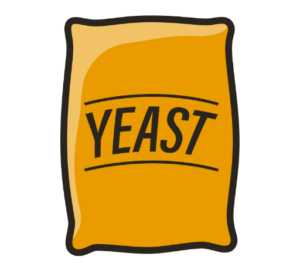
Experimental setup:
Add yeast to various Petri dishes containing water with different concentrations of green tea extract. Over time, calculate the pH to determine the level of carbon dioxide produced by the yeast.
Independent Variable:
Different concentrations of green tea extract
Dependent Variable:
Change in carbon dioxide concentration produced by yeast
6.) What is the effect of changing the light intensity on the speed of wood louse Armadillidium Vulgare?
Experimental setup:
Use atleast 5 different light intensities in an enclosed glass container with the wood louse Armadillidium Vulgare and capture the movement of the creature to asses speed.
Independent Variable:
Light Intensity
Dependent Variable:
Speed
7.) Comparing the vitamin C or ascorbic acid concentration in store-bought fruit juices and fresh fruits using a titrimetric method?
Experimental setup:
Fruit samples must be blended with metaphosphoric acid. The homogenous mixture must be measured around and diluted into a volumetric flask with metaphosphoric acid (HPO3). The diluted sample must then be filtered to remove away suspension using a vacuum pump before 10 ml aliquote of the filtrate is pipetted into a small Erlenmeyer flask. The filtrate must be immediately titrated with a dye solution to a faint pink endpoint.
Independent Variable:
Type of packed and fresh juices
Dependent Variable:
Amount of iodine, types of fruits
8.) An Investigation on the Effect of Varying Concentrations of Amino Acid Glycine on the Seed Germination of Phaseolus vulgaris Seeds?
Experimental setup:
Take the required number of petri dishes, and add varying concentrations of amino acid glycine to Phaseolus vulgaris Seeds. Asses the rate of germination over a fixed period of time and compare results to optimum concentration.
Independent Variable:
Varying concentrations of Glycine
Dependent Variable:
Seed germination
9.) Effect of different caffeine concentrations on the blinking rate of the human eye?
Experimental setup:
Providing different people categorized on age, weight and height, different concentrations of caffeine and recording their blinking rate for a duration of 5 minutes with a reliable camera
Independent Variable:
Caffeine Concentration
Dependent Variable:
Blinking rate of the human eye
10.) Determination of the ideal pH and temperature for accelerated germination of tomatoes?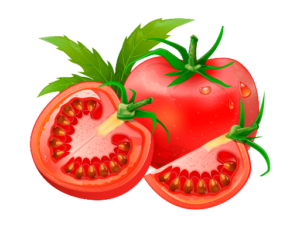
Experimental setup:
Placing different groups of tomato seeds in various combinations of pH and temperature conditions and determining the ideal pH and temperature conditions based upon number of seeds germinated and time consumed to do so.
Independent Variable:
- Temperature
- pH
Dependent Variable:
Germination of Tomato seeds
11.) Investigation of the effects of magnesium on the rate of photosynthesis in Brassica Rapa.
Experimental setup:
Measuring the rate of photosynthesis of various samples of Brassica Rapa which have been planted utilising the same type of soil or fertiliser but with various concentrations of magnesium.
Independent Variable:
Magnesium concentration of soil
Dependent Variable:
Rate of photosynthesis of Brassicar Rapa
12.) Investigation of pH and salt concentration on the heart rate of daphnia, a type of water flea.
Experimental setup:
Under different environmental conditions of pH and salt concentration, measure the heart rate of daphnia under a microscope and count the number of heart beats within a certain time period.
Independent Variable:
pH and Salt concentration of water
Dependent Variable:
Heart rate of water flea
13.) Analysis of the relationships between various abiotic factors such as and the diversity of plant species in a specific ecosystem.
Experimental setup:
Research upon different types of ecosystems that seem to be similar but have different abiotic factors and observe the different species within the ecosystem and understand the possible reasons as to the amount of biodiversity in the ecosystem.
Independent Variable:
Abiotic factors
Dependent Variable:
Biodiversity of ecosystem
14.) Examination of the effect of different types of oil on the cellular structure of plant cells of Solanum Tuberosum
Experimental setup:
Soaking samples of Solanum Tuberosum within various types of oils for a certain duration of time and analysing the cellular structure of plant cells, primarily the shape of their cell wall.
Independent Variable:
Type of Oil
Dependent Variable:
Cell wall structure and other cellular components of Solanum Tuberosum
15.) To what extent does different types of cooking techniques have on the concentration of vitamin A in Daucus Carota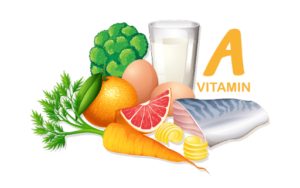
Experimental setup:
Measure the vitamin A concentration of Daucus Carota samples before they undergo cooking in various ways such as boiling, pan-frying, grilling and more and then measuring the vitamin A concentration after the cooking process and comparing the vitamin A concentration.
Independent Variable:
Method of Cooking
Dependent Variable:
Vitamin A concentration
16.) Investigating the ideal ratio of potassium:magnesium in fertilisers on the growth of seedlings of Zingiber officinale.
Experimental setup:
Placing seedlings of Zingiber officinale that are approximately the same age and measuring the rate of growth with shoot and root length over a fixed period of time within samples of soil with different potassium:magnesium ratios
Independent Variable:
Ratio of potassium:magnesium in fertiliser
Dependent Variable:
- Shoot length of Zingiber Officinale
- Root length of Zingiber Officinale
17.) To what extent does temperature and light intensity affect the concentration of phenolic acid within samples of Rubus Idaeus
Experimental setup:
Heat samples of Rubus Idaeus concentrate and measure the concentration of phenolic acids before and after the process.
Independent Variable:
Temperature
Dependent Variable:
Concentration of phenolic acid of Rubus Idaeus sample
18.) Examination of the effects of different physical and chemical treatments on the germination and growth of Carica papaya seeds.
Experimental setup:
Provide various types of treatments to samples of Carica papaya seeds and measure the germination and growth rate of these seeds.
Independent Variable:
Types of treatment(physic
Dependent Variable:
- Germination of Carica papaya
- Growth rate of Carica papaya
19.) What is the effect of light intensity on the rate of photosynthesis in spinach leaves?
Experimental setup:
Place spinach leaves in different light intensities and measure the rate of oxygen production.
Independent Variable:
Light intensity
Dependent Variable:
Rate of oxygen production
20.) How does the presence of salt affect the germination of bean seeds?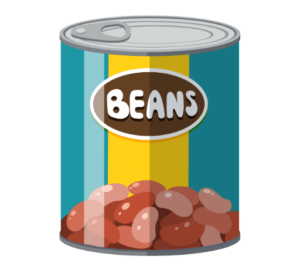
Experimental setup:
Plant bean seeds in soil with varying concentrations of salt and measure the rate of germination.
Independent Variable:
Concentration of salt in soil
Dependent Variable:
Rate of germination
21.) What is the effect of pH on the activity of lactase enzyme in milk?
Experimental setup:
Add lactase enzyme to milk at different pH levels and measure the rate of lactose breakdown.
Independent Variable:
pH level of milk
Dependent Variable:
Rate of lactose breakdown
22.) How does the presence of different types of antibiotics affect the growth of E.coli bacteria?
Experimental setup:
Culture E.coli bacteria in the presence of different types of antibiotics and measure the rate of growth.
Independent Variable:
Type of antibiotic
Dependent Variable:
Rate of growth of E.coli bacteria
23.) What is the effect of light wavelength on the rate of photosynthesis in elodea plants?
Experimental setup:
Illuminate elodea plants with different wavelengths of light and measure the rate of oxygen production.
Independent Variable:
Wavelength of light
Dependent Variable:
Rate of oxygen production
24.) How does the salinity of water affect the survival of brine shrimp?
Experimental setup:
Place brine shrimp in water of different salinity levels and measure the survival rate.
Independent Variable:
Salinity of water
Dependent Variable:
Survival rate of brine shrimp
25.) Investigation of the effect of different light wavelengths and intensities on the growth and starch content of Arabidopsis thaliana.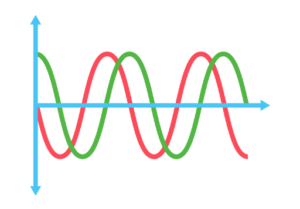
Experimental setup:
Growing samples of Arabidopsis thaliana (thale cress) under different wavelengths of light and evaluating their growth rates and starch content.
Independent Variable:
- Light Wavelength
- Light Intensity
Dependent Variable:
- Growth rate of Arabidopsis thaliana
- Starch Content of Arabidopsis thaliana
26.) Investigation of the effect of different hormones and light wavelength on the development of embryos of Xenopus laevis.
Experimental setup:
Treating fertilized eggs of Xenopus laevis (African clawed frog) with different hormones and light wavelengths and measuring the development of the embryos.
Independent Variable:
- Type of Hormone
- Light wavelength
Dependent Variable:
- Development of Xenopus laevis embryos
27.) Investigation of the effect of exercise on the concentration of lactate and potassium in the blood of humans
Experimental setup:
Having human participants engage in different levels and intensities of exercise and measuring the concentration of lactate and potassium in their blood.
Independent Variable:
- Level and Intensity of Exercise
Dependent Variable:
- Concentration of Lactate in the Blood of Humans
- Potassium
28.) Investigation of the effect of different antibiotics in different pH concentrations on the growth of Bifidobacterium
Experimental setup:
Growing samples of Bifidobacterium in the presence of different antibiotics and pH environments and measuring their growth.
Independent Variable:
- Type of Antibiotic
- pH
Dependent Variable:
- Growth of Bifidobacterium
29.) Investigation of the effect of different concentrations of carbon dioxide on the rate of photosynthesis and respiration in Chlorella vulgaris
Experimental setup:
Exposing samples of Chlorella vulgaris (green algae) to different concentrations of carbon dioxide and measuring the rate of photosynthesis and respiration.
Independent Variable:
- Concentration of Carbon Dioxide
Dependent Variable:
- Rate of Photosynthesis of Chlorella vulgaris
- Rate of Respiration of Chlorella vulgaris
30.) Investigation of the effect of different environmental conditions on the behavior and lifespan of Drosophila melanogaster
Experimental setup:
Observing the behavior and lifespan of Drosophila melanogaster under different environmental conditions, such as temperature, humidity, and light exposure.
Independent Variable:
- Humidity
- Light Exposure and more
Dependent Variable:
- Behavior of Drosophila melanogaster
- Lifespan of Drosophila melanogaster
IB Tutoring Recent Blogs
Give our blog a read for anything you need















